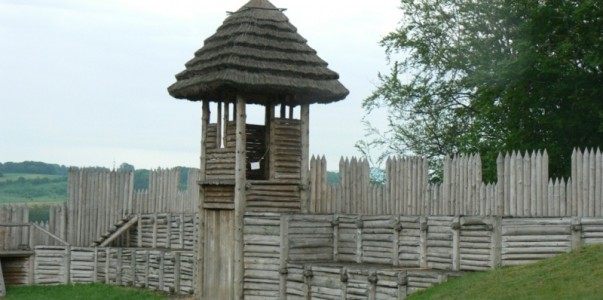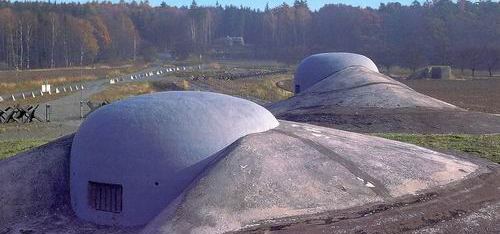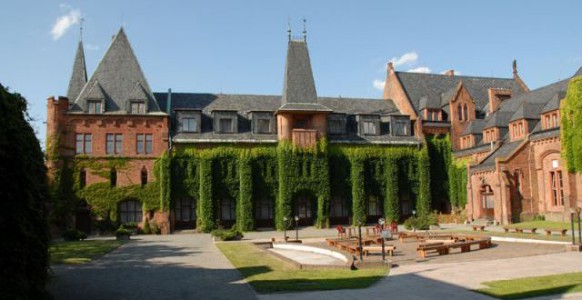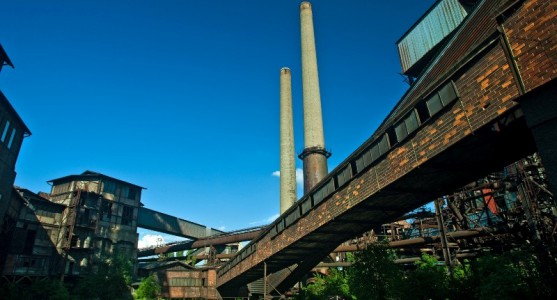The city of Ostrava and the surrounding area is often called “the steel heart of the republic” because of its long history of mining and industry. But the region also has significant potential for filmmakers, who are only slowly discovering what Ostrava has to offer.
Ostrava appeared in the 2008 sci-fi film Babylon A.D., starring Vin Diesel. In the French-American production, Diesel plays a soldier assigned to escort a young woman from Russia to Canada. Director Mathieu Kassovitz shot an action sequence with Diesel in the main street of Ostrava-Poruba. A residential quarter built in the Socialist-Realist style, Poruba doubles as Moscow in the film.
Babylon A.D. also shot at Ostrava’s Vítkovice steelworks. The blast furnaces and chimneys as well as the Hlubina mining towers give the area its signature panorama and the nickname “Ostrava Castle,” after the instantly recognizable spires of Prague Castle. No longer an active industrial site, Lower Vítkovice is a National Cultural Monument and a European Cultural Heritage site. The steelworks employed and built housing for thousands of workers. Many of these buildings, dating from the late 19th and early 20th century, still stand. Built in Empire and neo-Gothic style, they could easily stand in for Victorian England or the Low Countries of Northern Europe in the same era.
The Michal coal mine in the nearby neighborhood of Michálkovice is likewise a National Cultural Monument and is on a tentative list of UNESCO World Heritage sites. The mine operated from 1843 to 1995, after which cultural authorities preserved the entire complex in its original state as a museum.
The Moravian-Silesian region surrounding Ostrava is home to many castles and palaces. To the south of Ostrava are the ruins of the Hukvaldy and Šostýn castles. Not far from the town of Opava, northeast of Ostrava, are the ruins of Šelenburk Castle. Nearby is Hradec nad Moravicí, with its Classicist and Neo-Gothic buildings and 140-acre wooded English park, not to mention stunning views of the Moravice River valley.
Much of the historic architecture in the region served a military purpose. Baroque fortresses can be found in Kunín, Kravaře and Studénka, while the fortresses of Raduň and Frýdek-Místek have Renaissance style. The region also features the Hlučín-Darkovičky fortifications, built in 1935-1938 as a defence against Germany.
Just northwest of Ostrava is the village of Ludgeřovice with its neo-Gothic cathedral of St. Nicholas. To the east lies Karviná, where decades of coal mining have transformed the environment into a moonscape.
Havířov is the Czech Republic’s youngest town, officially founded in 1955 and, like Poruba, built in the Socialist-Realist style. Nearby Chotěbuz, on the other hand, is one the oldest settlements; here you can visit protected archeological sites dating back to the 8th century and reconstructions of historic fortifications and settlements.
Ostrava and the surrounding area have appeared in a handful of contemporary Czech films, including Martin Šulík’s dark comedy Sluneční stát (2005), Radim Špaček’s award-winning thriller Pouta (2009), and Jakub Sluka’s football comedy Non plus ultras (2004). Ostrava and Karviná also appear in Yuma (2011), from Polish director Piotr Mularuk, in which Czech locations double for Frankfurt, Germany.
Ostrava lies about 350 km from Prague in the northeast of the Czech Republic, close to the border with Poland. Flights from the capital take just an hour, trains three hours. The city offers abundant accommodation and catering as well as many cultural and social activities, not the least of which is Stodolní Street, where you will find some of the most exciting nightlife in the country.
Want to learn more about Ostrava and the surrounding area? Looking for interesting locations for your new film project? Contact the Czech Film Commission (info@filmcommission.cz) or the City of Ostrava, Economic Development Department, Division of Marketing of Investment Opportunities and Tourism, tel. +420 599 443 036, film@ostrava.cz.











